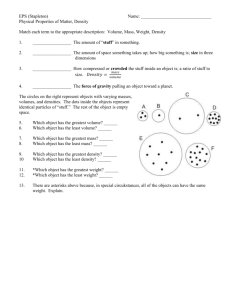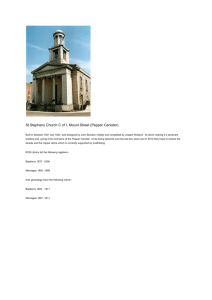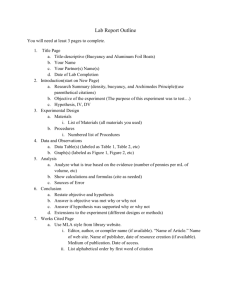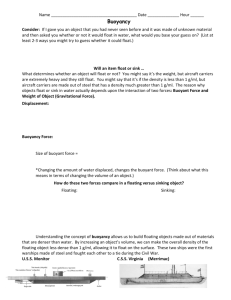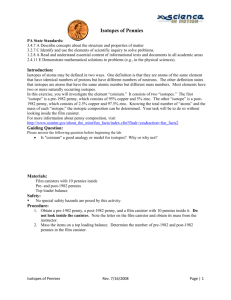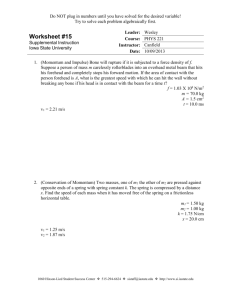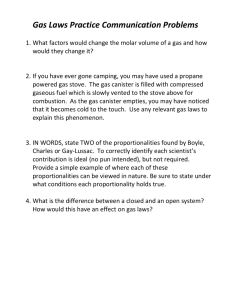Lab 3: Buoyancy and Archimedes* Principle
advertisement
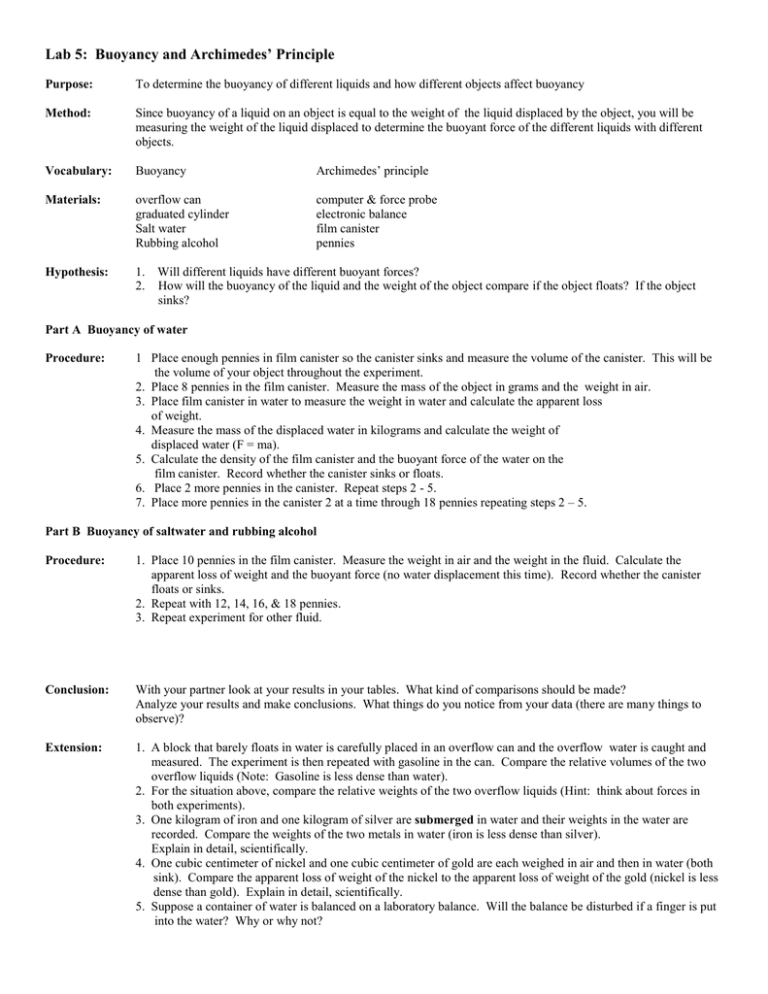
Lab 5: Buoyancy and Archimedes’ Principle Purpose: To determine the buoyancy of different liquids and how different objects affect buoyancy Method: Since buoyancy of a liquid on an object is equal to the weight of the liquid displaced by the object, you will be measuring the weight of the liquid displaced to determine the buoyant force of the different liquids with different objects. Vocabulary: Buoyancy Archimedes’ principle Materials: overflow can graduated cylinder Salt water Rubbing alcohol computer & force probe electronic balance film canister pennies Hypothesis: 1. 2. Will different liquids have different buoyant forces? How will the buoyancy of the liquid and the weight of the object compare if the object floats? If the object sinks? Part A Buoyancy of water Procedure: 1 Place enough pennies in film canister so the canister sinks and measure the volume of the canister. This will be the volume of your object throughout the experiment. 2. Place 8 pennies in the film canister. Measure the mass of the object in grams and the weight in air. 3. Place film canister in water to measure the weight in water and calculate the apparent loss of weight. 4. Measure the mass of the displaced water in kilograms and calculate the weight of displaced water (F = ma). 5. Calculate the density of the film canister and the buoyant force of the water on the film canister. Record whether the canister sinks or floats. 6. Place 2 more pennies in the canister. Repeat steps 2 - 5. 7. Place more pennies in the canister 2 at a time through 18 pennies repeating steps 2 – 5. Part B Buoyancy of saltwater and rubbing alcohol Procedure: 1. Place 10 pennies in the film canister. Measure the weight in air and the weight in the fluid. Calculate the apparent loss of weight and the buoyant force (no water displacement this time). Record whether the canister floats or sinks. 2. Repeat with 12, 14, 16, & 18 pennies. 3. Repeat experiment for other fluid. Conclusion: With your partner look at your results in your tables. What kind of comparisons should be made? Analyze your results and make conclusions. What things do you notice from your data (there are many things to observe)? Extension: 1. A block that barely floats in water is carefully placed in an overflow can and the overflow water is caught and measured. The experiment is then repeated with gasoline in the can. Compare the relative volumes of the two overflow liquids (Note: Gasoline is less dense than water). 2. For the situation above, compare the relative weights of the two overflow liquids (Hint: think about forces in both experiments). 3. One kilogram of iron and one kilogram of silver are submerged in water and their weights in the water are recorded. Compare the weights of the two metals in water (iron is less dense than silver). Explain in detail, scientifically. 4. One cubic centimeter of nickel and one cubic centimeter of gold are each weighed in air and then in water (both sink). Compare the apparent loss of weight of the nickel to the apparent loss of weight of the gold (nickel is less dense than gold). Explain in detail, scientifically. 5. Suppose a container of water is balanced on a laboratory balance. Will the balance be disturbed if a finger is put into the water? Why or why not?
